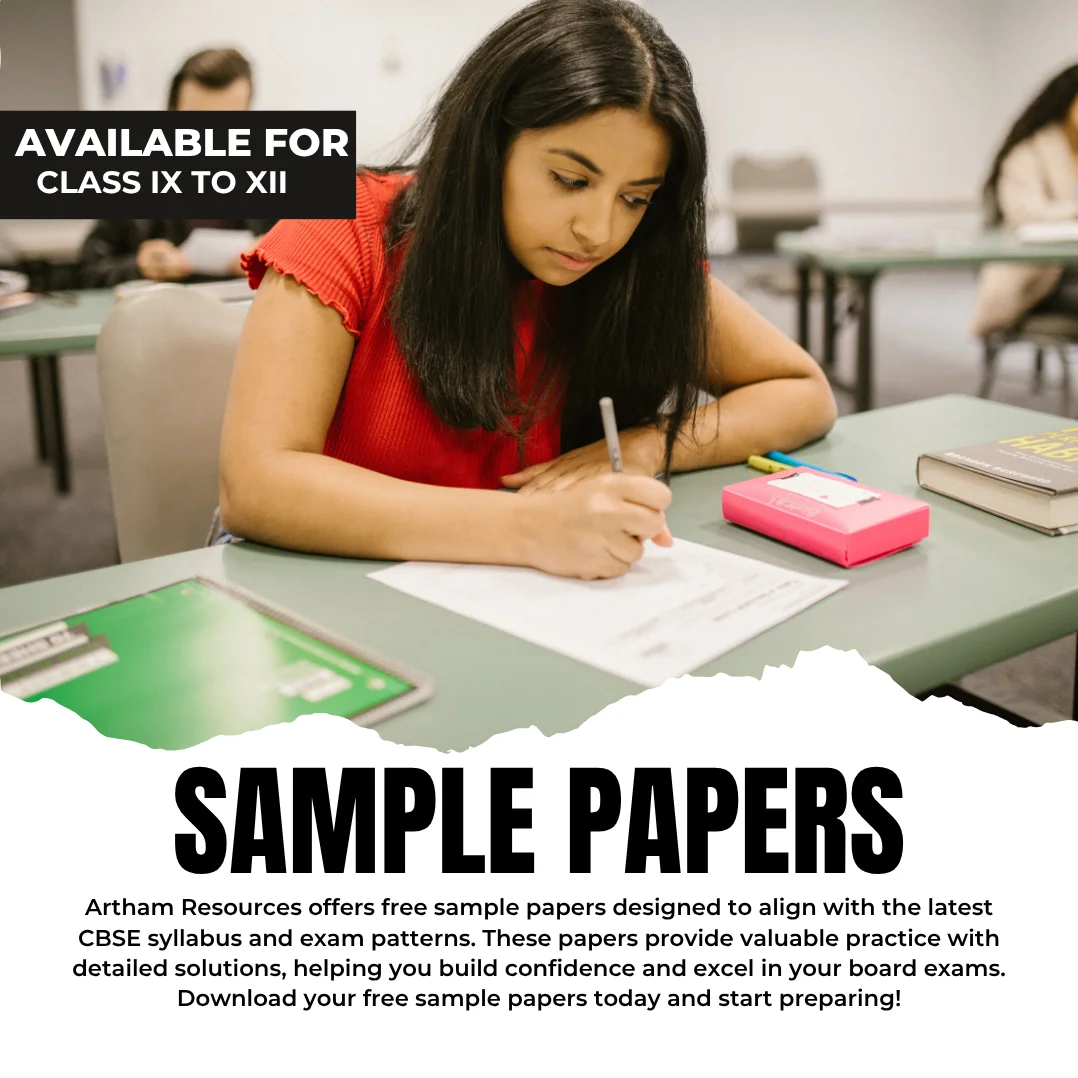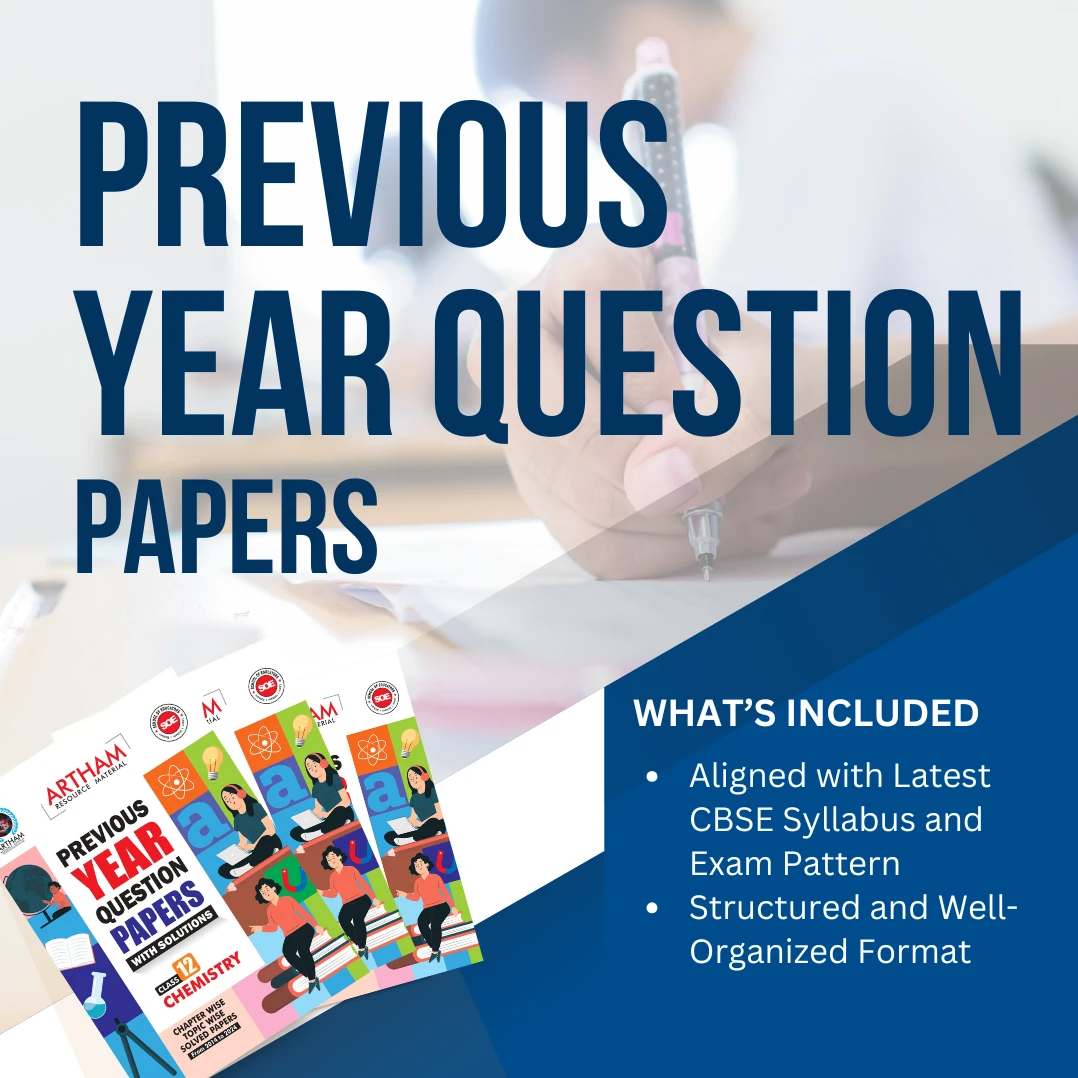Shop Left Sidebar
- CBSE
- Chapter Wise Topic Wise Notes
- Class 10
- Class 9
- Competency-Based Question Bank
- Competitive Exams & Aptitude Tests
- Comprehensive Viva Voice
- Courses
- CUET
- Daily Practice Paper (DPP)
- Diagnostic Assessment
- eBooks
- For New School
- Foundation and Olympiad Study Material
- Gift for Students
- Gift for Teachers
- Half Yearly Sample Question Paper with Solution
- Holiday Homework
- Illustrative Charts
- Journal
- Kindergarten
- Lesson Plan
- Life Skills
- Line by Line Questions
- Mind Maps
- Must Buy
- NCERT Exemplar Solutions
- NCERT Solutions
- Notes
- POWERPOINT PRESENTATIONS
- Pre Launch Stage
- Premium WhatsApp Group
- Previous Year Question Papers
- Previous Year Question Papers with Solutions
- Print version of SOP
- Sample Paper
- Sample Paper with Solutions
- Self Development
- Split -up Syllabus
- Sports and Physical Education
- Standard Operating Manuals
- Study Materials for Students
- Teachers Manual with Lesson Plans
Best seller
-
-100%
₹ 50.00Original price was: ₹ 50.00.₹ 0.00Current price is: ₹ 0.00. -
-100%
₹ 50.00Original price was: ₹ 50.00.₹ 0.00Current price is: ₹ 0.00. -
-100%
₹ 50.00Original price was: ₹ 50.00.₹ 0.00Current price is: ₹ 0.00. -
-100%
₹ 299.00Original price was: ₹ 299.00.₹ 0.00Current price is: ₹ 0.00.
- CBSE
- Chapter Wise Topic Wise Notes
- Class 10
- Class 9
- Competency-Based Question Bank
- Competitive Exams & Aptitude Tests
- Comprehensive Viva Voice
- Courses
- CUET
- Daily Practice Paper (DPP)
- Diagnostic Assessment
- eBooks
- For New School
- Foundation and Olympiad Study Material
- Gift for Students
- Gift for Teachers
- Half Yearly Sample Question Paper with Solution
- Holiday Homework
- Illustrative Charts
- Journal
- Kindergarten
- Lesson Plan
- Life Skills
- Line by Line Questions
- Mind Maps
- Must Buy
- NCERT Exemplar Solutions
- NCERT Solutions
- Notes
- POWERPOINT PRESENTATIONS
- Pre Launch Stage
- Premium WhatsApp Group
- Previous Year Question Papers
- Previous Year Question Papers with Solutions
- Print version of SOP
- Sample Paper
- Sample Paper with Solutions
- Self Development
- Split -up Syllabus
- Sports and Physical Education
- Standard Operating Manuals
- Study Materials for Students
- Teachers Manual with Lesson Plans
Showing 1–16 of 65 results
-
-62%
Lesson Plan Class 7 Mathematics Chapter 6 The Triangle And Its Properties
₹ 50.00Original price was: ₹ 50.00.₹ 19.00Current price is: ₹ 19.00.Explore the intricacies of triangles in this comprehensive lesson plan for Class 7 Mathematics. Covering Chapter 6: The Triangle and Its Properties, this plan delves into fundamental geometric concepts such as types of triangles (scalene, isosceles, equilateral), properties (angles, sides, inequalities), and applications of triangle properties in real-world scenarios.
-
-50%
Lesson Plan Class 7 English Chapter 8 A Homage to our Brave Soldiers
₹ 50.00Original price was: ₹ 50.00.₹ 25.00Current price is: ₹ 25.00.This lesson plan for Class 7 English, focusing on Chapter 8 “A Homage to our Brave Soldiers,” is designed to impart a deep appreciation for the valor and sacrifices of soldiers. Through interactive activities, students will explore themes of patriotism, bravery, and national pride. The lesson includes reading comprehension exercises to enhance understanding of the chapter, discussions on the significance of soldiers in safeguarding our nation, and creative writing tasks to express gratitude through poetry or letters.
-
-62%
Lesson Plan Class 7 Social Science (History) Chapter 3 Delhi: 12th to 15th Century
₹ 50.00Original price was: ₹ 50.00.₹ 19.00Current price is: ₹ 19.00.In this lesson plan for Class 7 Social Science (History), Chapter 3 focuses on the historical period of Delhi from the 12th to the 15th century. Students will delve into the vibrant cultural and political landscape of medieval Delhi, exploring the rise and fall of dynasties such as the Delhi Sultanate.
-
-62%
Lesson Plan Class 7 Social Science (History) Chapter 2 Kings and Kingdoms
₹ 50.00Original price was: ₹ 50.00.₹ 19.00Current price is: ₹ 19.00.This lesson plan for Class 7 Social Science focuses on Chapter 2: Kings and Kingdoms, exploring the evolution of rulers and dynasties in ancient India. Students will delve into the political structure of early civilizations, studying prominent kingdoms such as the Mauryas, Guptas, and Cholas. The lesson aims to foster an understanding of governance, administration, and cultural achievements during these historical periods.
-
-62%
Lesson Plan Class 7 Social Science (Civics) Chapter 3 How The State Government Works
₹ 50.00Original price was: ₹ 50.00.₹ 19.00Current price is: ₹ 19.00.“In this lesson plan for Class 7 Social Science (Civics), students explore Chapter 3: How The State Government Works. The lesson aims to deepen understanding of state governance structures, roles of key officials, and the functioning of state legislatures. Activities include interactive discussions on the roles of the Governor, State Legislature, and State Executive, coupled with simulations of state legislative processes.
-
-62%
Lesson Plan Class 7 Social Science (Civics) Chapter 1 On Equality
₹ 50.00Original price was: ₹ 50.00.₹ 19.00Current price is: ₹ 19.00.This lesson plan for Class 7 Social Science (Civics) Chapter 1 focuses on understanding the concept of equality. Students will explore various dimensions of equality, including social, economic, and political aspects. The lesson aims to engage students through interactive discussions, case studies, and multimedia resources to deepen their understanding of how equality functions in society.
-
-62%
Lesson Plan Class 7 Science Chapter 9 Electricity And Circuits
₹ 50.00Original price was: ₹ 50.00.₹ 19.00Current price is: ₹ 19.00.The lesson plan for Class 7 Science Chapter 9, “Electricity and Circuits,” introduces students to the fundamental concepts of electricity and electrical circuits. The lesson covers the basics of electric current, the structure and function of a simple circuit, and the role of various components such as cells, bulbs, switches, and wires. Through engaging activities and hands-on experiments, students will learn to construct and analyze different types of circuits, understand the flow of electricity, and identify conductors and insulators.
-
-62%
Lesson Plan Class 7 Mathematics Chapter 7 Comparing Quantities
₹ 50.00Original price was: ₹ 50.00.₹ 19.00Current price is: ₹ 19.00.This lesson plan for Class 7 Mathematics focuses on Chapter 7: Comparing Quantities. Students will delve into the fundamental concepts of ratios, percentages, and their applications in real-life scenarios. The plan includes interactive activities to help students grasp the concept of comparison through practical examples and problem-solving exercises.
-
-62%
Lesson Plan Class 7 Mathematics Chapter 4 Simple Equations
₹ 50.00Original price was: ₹ 50.00.₹ 19.00Current price is: ₹ 19.00.Explore the world of simple equations with this comprehensive lesson plan tailored for Class 7 students. This engaging session focuses on Chapter 4 of the Mathematics curriculum, guiding students through the fundamentals of solving basic equations step-by-step. The plan incorporates interactive activities and practical examples to strengthen understanding of variables, constants, and the balance method in equations.
-
-50%
Lesson Plan Class 7 English Chapter 5 Quality
₹ 50.00Original price was: ₹ 50.00.₹ 25.00Current price is: ₹ 25.00.This lesson plan for Class 7 English Chapter 5, “Quality,” focuses on enhancing students’ comprehension and analytical skills through the poignant story of Mr. Gessler, a dedicated shoemaker whose commitment to quality surpasses commercial success. The lesson begins with a brief introduction to the author, John Galsworthy, and the historical context of the story. Students will engage in reading activities, followed by a detailed discussion on the themes of craftsmanship, perseverance, and the impact of industrialization on traditional skills.
-
-50%
Lesson Plan Class 7 English Chapter 4 The Ashes That Made Trees Bloom
₹ 50.00Original price was: ₹ 50.00.₹ 25.00Current price is: ₹ 25.00.This lesson plan for Class 7 English, Chapter 4: “The Ashes That Made Trees Bloom,” provides a comprehensive approach to understanding and appreciating this Japanese folktale. The lesson aims to enhance students’ reading and comprehension skills through engaging activities and discussions. It includes a detailed summary of the story, focusing on the themes of kindness, gratitude, and the bond between humans and nature.
-
-62%
Lesson Plan Class 7 Social Science (History) Chapter 7 The Making of Regional Cultures
₹ 50.00Original price was: ₹ 50.00.₹ 19.00Current price is: ₹ 19.00.This lesson plan focuses on Chapter 7 of Class 7 Social Science (History), exploring “The Making of Regional Cultures”. Students will delve into the diverse cultural landscapes that emerged in medieval India, examining how various regions developed distinct identities through language, art, architecture, and traditions. Through engaging activities and discussions, learners will grasp the influences of religion, trade, and social interactions on regional cultures during this period.
-
-62%
Lesson Plan Class 7 Social Science (History) Chapter 1 Introduction: Tracing Changes Through a Thousand Years
₹ 50.00Original price was: ₹ 50.00.₹ 19.00Current price is: ₹ 19.00.In this lesson plan for Class 7 Social Science (History), students delve into “Introduction: Tracing Changes Through a Thousand Years.” The lesson aims to explore historical changes spanning a millennium, focusing on key transitions, cultural shifts, and socio-political developments across different civilizations. Students will analyze how societies evolved, adapted, and influenced each other over time, using primary sources and artifacts to understand continuity and change.
-
-62%
Lesson Plan Class 7 Social Science (Geography) Chapter 6 Human Environment Interactions The Tropical And The Subtropical Region
₹ 50.00Original price was: ₹ 50.00.₹ 19.00Current price is: ₹ 19.00.This lesson plan for Class 7 Social Science (Geography) focuses on Chapter 6: Human Environment Interactions – The Tropical And The Subtropical Region. Students will explore the diverse ecosystems, climate patterns, and human adaptations in tropical and subtropical regions. The lesson integrates geographical concepts with environmental studies, highlighting the significance of biodiversity, agriculture, and resource management in these regions.
-
-50%
Lesson Plan Class 7 Social Science (Geography) Chapter 5 Water
₹ 50.00Original price was: ₹ 50.00.₹ 25.00Current price is: ₹ 25.00.The lesson plan for Class 7 Social Science (Geography) Chapter 5, “Water,” provides a comprehensive overview of the significance, distribution, and conservation of water resources on Earth. The lesson begins with an introduction to the water cycle, explaining processes such as evaporation, condensation, and precipitation. Students will explore the various sources of water, including rivers, lakes, and groundwater, and understand the concept of watersheds. The plan also covers the importance of oceans and seas and their role in regulating climate.
-
-62%
Lesson Plan Class 7 Social Science (Geography) Chapter 4 Air
₹ 50.00Original price was: ₹ 50.00.₹ 19.00Current price is: ₹ 19.00.This lesson plan for Class 7 Social Science (Geography) Chapter 4, titled “Air,” focuses on understanding the composition, structure, and significance of the Earth’s atmosphere. The lesson introduces students to the various layers of the atmosphere, including the troposphere, stratosphere, mesosphere, thermosphere, and exosphere, highlighting their unique characteristics and functions. Students will explore the importance of air in sustaining life, regulating temperature, and facilitating weather phenomena.
Teaching is one of the hardest and most important jobs in the world. We provide the support that teachers need to transform their subjects into terms that their students will understand.
- Nageen International
- B-162, 4th Floor, DDA Shed, Okhla Industrial Area Phase 1 New Delhi-110020 (India)
- WhatsApp us at +91-95208-11111
- Email: info@educatorsresource.in
- (Monday to Saturday) WhatsApp 24*7
2025 Educator Resources. All Rights Reserved.




